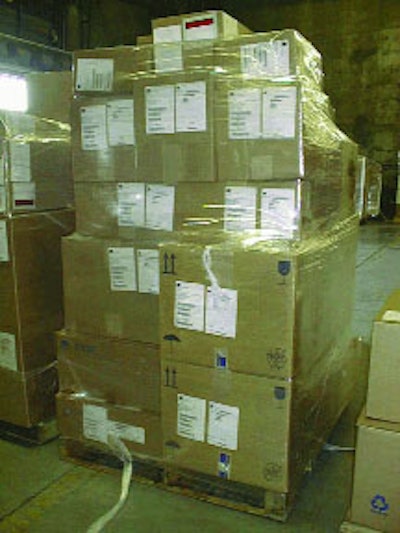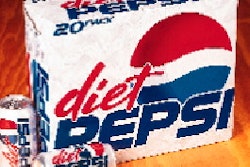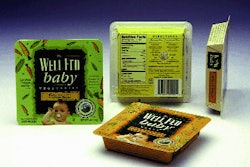Like many other high-tech companies, 3Com has grown rapidly, often by acquisition. At the same time, the Santa Clara, CA-based manufacturer of computer networking products has maintained a nimble, decentralized management structure. That permits decisions to be made extremely close to the firm's various markets worldwide.
However, acquisitions and decentralized management have resulted in an inconsistent approach to packaging, especially transport packaging. "There hasn't been a lot of commonality," admits Willy Han, industrial engineer in 3Com's distribution group. "We have all these different business units, various manufacturing and distribution organizations, and each had their own practices," he says.
Occasionally, packaging is designed late in the new-product development cycle, according to Han, often with little thought given to issues such as maximizing density for freight savings or maximizing palletizing efficiency.
"Many times, packages are designed [solely] for product protection without consideration given to these other areas," says 3Com's Anil Shah, senior buyer. Occasionally, these factors "may force a package redesign, which is costly and disruptive," says Han.
Recognizing the problem, 3Com assembled a cross-functional team late last year, led by Shah, to create a set of packaging standards for all plants and groups within 3Com to follow. The Global Packaging Initiatives Team includes individuals from packaging engineering, purchasing, logistics, distribution, manufacturing, finance and marketing.
The object is ongoing process improvement in the way package development is handled at 3Com, says Shah. It's a way of setting down on paper an approach to designing packaging for distribution (also known as transport packaging) that can become a "best practices" document that will be propagated throughout the company. "By making this standard available corporate-wide, rather than having each plant go off and do research on their own," says Han, "we'll provide that information so they can do a much more effective job" at transport package design.
At the root of 3Com's packaging challenges is the fact that while it employs packaging engineers, it has no formal packaging department. The company has been growing so rapidly that "unlike [other high-tech] companies such as Hewlett-Packard, we haven't had the luxury of being able to establish a prominent packaging department," says Han. "In 3Com's case, it never really became a priority." And now, confirms Han, the company is starting to feel the effects of that decision. Indeed, one of GPIT's recommendations to management will be to create such a department.
Increasing transportation efficiency
The team decided first to address transport packaging, leaving the issue of primary packaging for a future effort. The most logical improvement the team will seek: to increase transportation efficiencies and reduce damages.
Packaging density is one area that will be addressed. "Given that most of our overseas shipments are done by air, there are more limitations than with [domestic] surface freight," says Han. "It's a case of not only trying to standardize on pallet height, but also trying to maximize the density."
Maximizing density is important because air couriers charge by what's referred to as "dimensional weight." That is, the outside dimensions of the load are multiplied together and divided by a predetermined numerical factor to arrive at the dimensional weight. "So the actual weight may only be 100 pounds, but because of the size of the overall load, they may charge you for 500 pounds," says Han. Or, viewed from another perspective, "When we are shipping air in boxes, that costs us extra," says Shah.
Another area to be addressed, according to Han: "Sometimes when you ship a pallet load, it may be broken down by the airline without your knowledge." Airlines may break down loads--especially oversized or unevenly packed loads--to fit the boxes more efficiently inside their cargo compartments, according to Han.
That's not good, because individual boxes may have been designed to provide adequate protection to their contents exclusively as part of a unitized load. Or, the load may not be reassembled properly. "So the question is, how can we build a load so that when we present it to the airlines, they'll think it looks like a perfect load? They won't want to touch it, and they'll break down somebody else's pallet instead," says Han.
The packaging standards the team is creating "would minimize transportation costs, drastically improve the process and ensure that the load arrives in the same condition it left," Han adds.
Not just numbers
The standards will attempt, where possible, to address specifics, such as the size of a pallet for a given region, how much weight it should carry and how tall it should be. "The standards will also cover what works in Europe, what works in the Asia Pacific region and what works in the U.S.," says Shah.
The standards won't run roughshod over important global differences in each market. "It will be one set of standards, but it will take into account regional differences, as far as what equipment to use, or what kind of pallets are available," says Han. "Rather than be U.S.-centric and have two different sets, we will accommodate all these variations around the world."
But Han is quick to point out that the team is being careful not to make too many standards that are too specific. "The standards will not only have hard numbers, but also operational practices," Han says. "We're not necessarily trying to dictate which box size they have to stick to. But rather we're providing a framework. If [the manufacturing sites] start going out of the bounds of this framework, [the standards] will identify the potential problems that they could run into," says Han.
Finally, Han makes it clear that individual sites can continue to purchase from their existing vendors. "This is not an attempt to dictate to the different regions which suppliers to use."
Reduced theft
Another area of concern at 3Com is how to design packaging so that it minimizes the opportunity for theft or pilferage during the distribution process. While Han and Shah emphasize theft hasn't been a problem in the past, it's something that 3Com wants its packaging designers to be aware of.
"When our pallets are sitting on our couriers' docks, we don't have much control over them," says Shah. Orders that are fulfilled via single-case quantities are especially vulnerable, according to Shah.
To reduce the potential for theft, the standards could describe ways to de-emphasize the company logo or alter the description printed on the outside of the box "so that it doesn't attract unnecessary attention," says Shah.
The standards will also contain information to ease compliance with global environmental and recycling legislation. In fact, Han sits on another 3Com global team whose sole task is to address compliance with environmental legislation around the globe. He intends to incorporate knowledge gleaned from that team into the packaging standards.
Of course, activity on the environmental front isn't static, Shah acknowledges. "We'll continue to look at ongoing regulations in Europe, the U.S. and Asia Pacific, and continue to adjust the standards as regulations change."
Another benefit will be unified labeling and identification of shipping cases. The company has a broad product line, and customers often buy multiple products that can arrive from different 3Com manufacturing and distribution sites all over the world. "We want it to look like each box came from one company versus a number of different companies," says Han. "It's about making sure we present one face to the customer when they receive the product."
Question first, implement later
To create packaging standards, the team is in the initial stages of gathering information on current packaging practices from all of 3Com's offices, plants and distribution centers.
The team is also canvassing its air and ground transportation suppliers for their input. Then they'll wrestle with the information and distill it into a core set of standards and practices.
Once the document is hammered out, it will be disseminated to both 3Com's employees as well as distribution-related suppliers.
Of course, since 3Com is a networking company, both the data collection and the dissemination of standards will occur with the ultimate network, the Internet. Han is in the process of designing a survey to collect packaging-specific information. But instead of printing and mailing a paper survey, Han will put the survey on a private Web site that's available via the firm's intranet. Certain distribution-related suppliers will be also be granted access to this Web site-based survey because their input is being sought, too.
Similarly, once completed, the actual standards will be posted to the very same intranet.
Challenges ahead
Creating a set of standards is one thing, but compelling 3Com's various global manufacturing and distribution sites to follow them is quite another. Yet Han and Shah claim that doesn't seem to be a big problem. "When this project was announced, it was very well-received because everybody recognizes the need for such standards," claims Han. "That's why this team has so many members, with representation from various functions and sites." Currently, about 15 people make up the team.
Still, there will be obstacles. Han acknowledges that there will be a few cases where "certain packages would need to be redesigned because they'd be in violation of the packaging standards."
"There might be some resistance," concedes Shah. "But most 3Com people see the advantages and benefits" that global packaging standards offer.
Economics are justified
Still, the task of identifying and disseminating global packaging standards is extremely time-consuming and will take months. Han and Shah do say that the standards will eventually result in savings that will justify the project, though they offer no specific goals that the team is trying to target. But the savings, they argue, could come from several areas.
First, 3Com hopes that by giving more forethought to packaging design earlier in the process, it will greatly reduce if not eliminate the need for transport packaging redesigns. The firm also hopes to reduce costs related to shipping damage.
Increasing shipping density will be another source of savings as 3Com closes the gap between actual weight and dimensional weight charged by its air carriers.
Another anticipated source of savings is obtaining quantity discounts with packaging suppliers. "By using a smaller variety of components, a site may end up buying components in larger quantities," says Han. "Up to now, there really hasn't been much attention paid to this for 3Com's transport packaging. So we have a lot of low-hanging fruit to pursue."
Measuring results
To measure the success of the standards after they're implemented, the team is also developing a set of metrics or yardsticks that it can use to quantify any savings it will receive.
In the end, 3Com hopes to retain its decentralized structure that's contributed so much to its success, but at the same time handle its transportation packaging in a consistent way, regardless of where in the world each product is made or sold.
"It's not just about designing a box, or specifying what a pallet size needs to be," says Han. "It's really designing an integrated approach [to global transport package design]. So as the package starts out in manufacturing and moves through the supply chain, all the different needs of that package have been accounted for. And the total benefit should be greater than the sum of its parts."
























